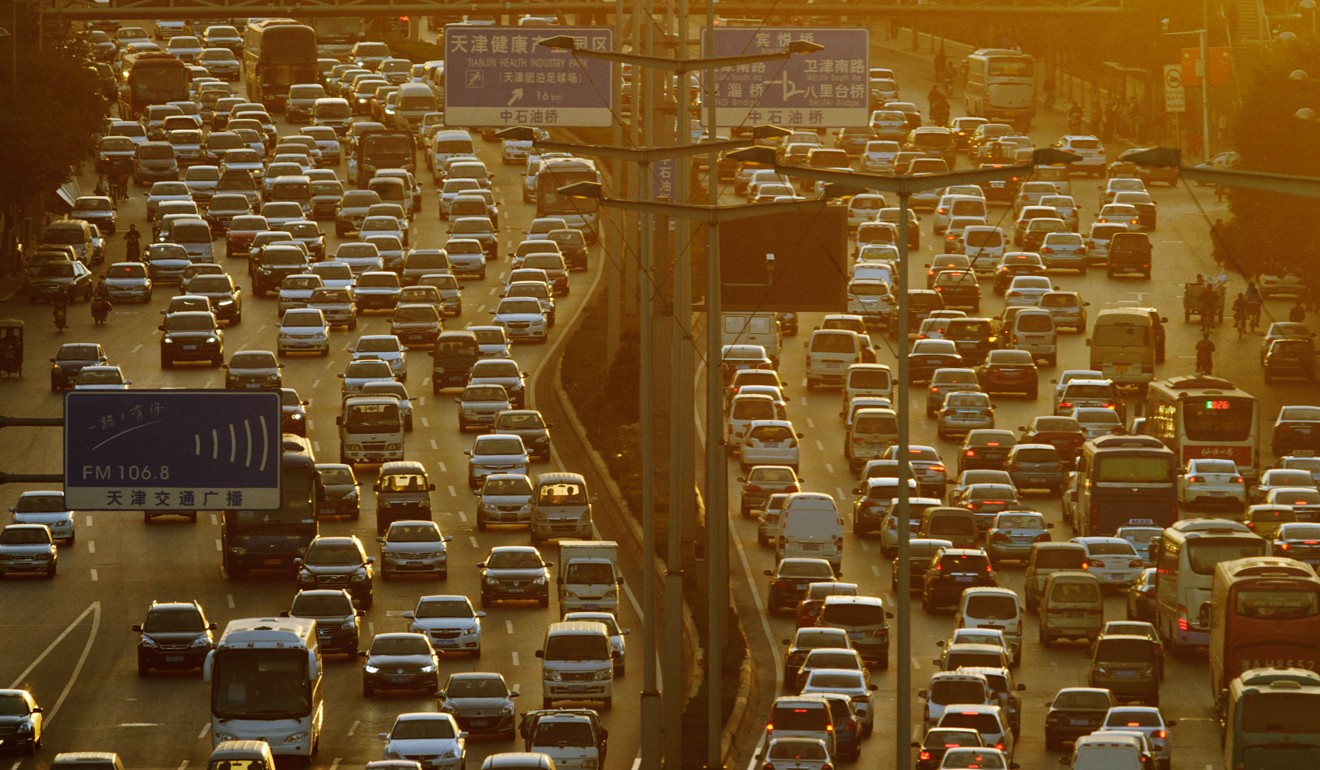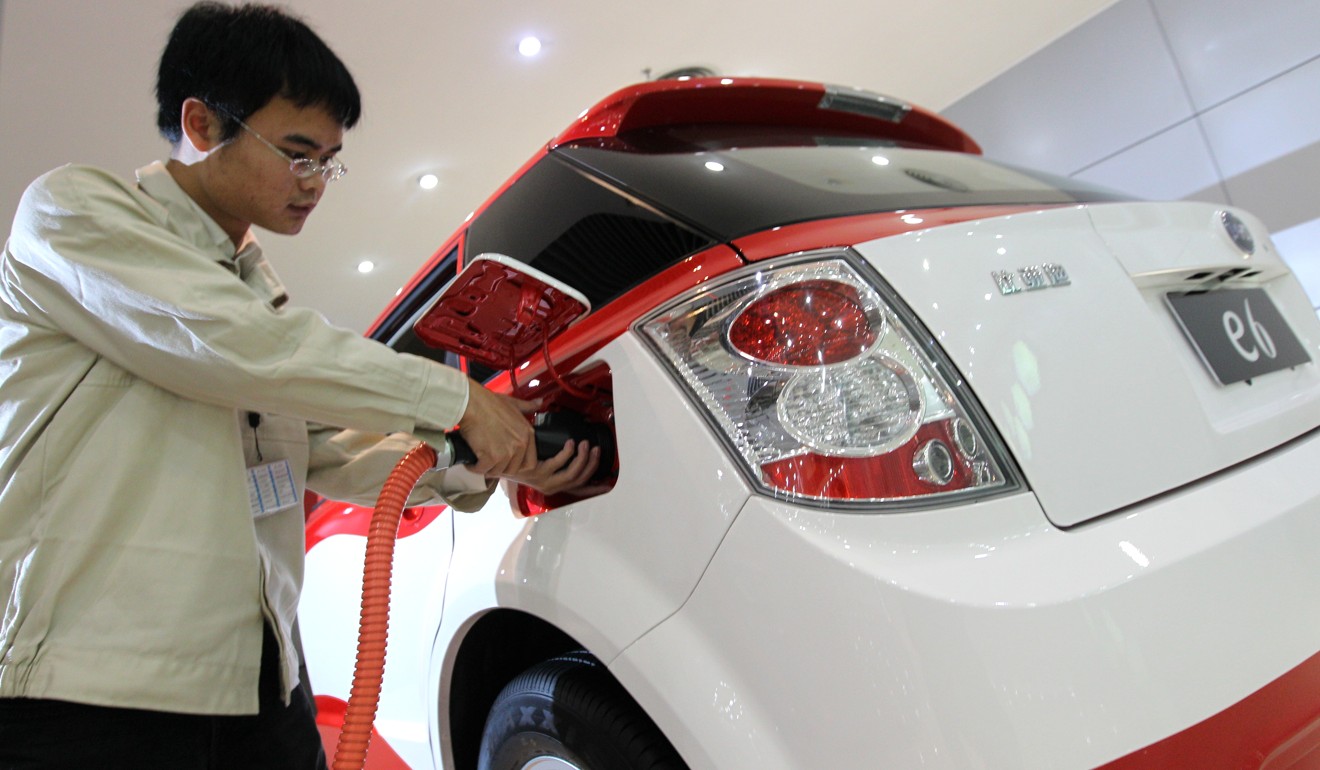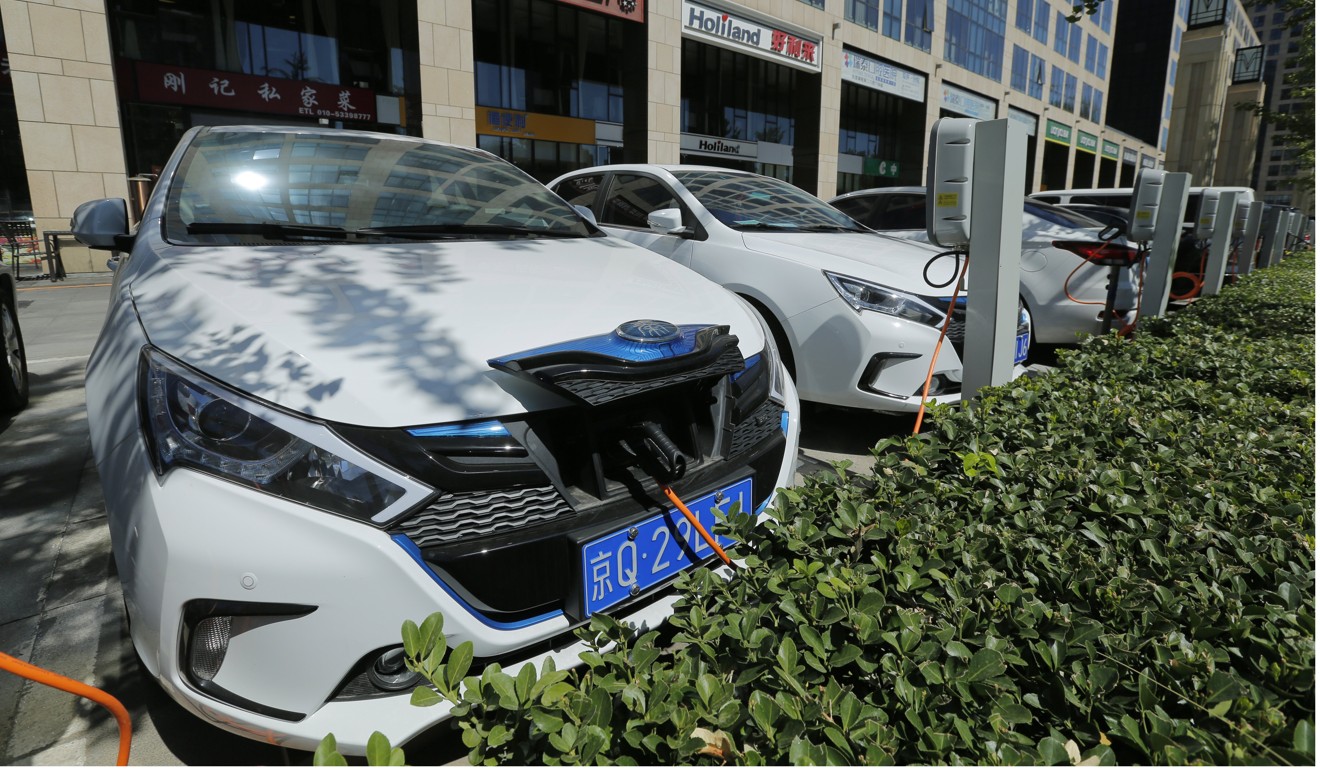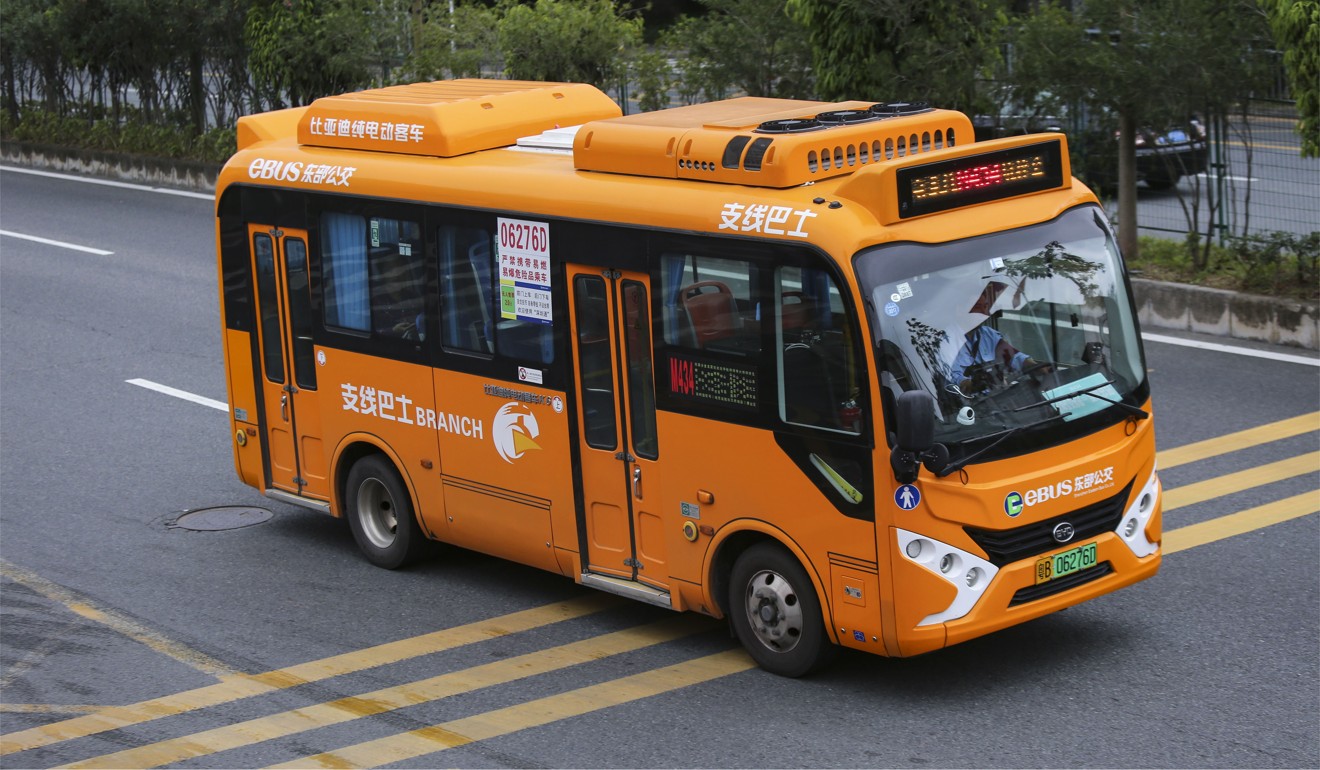
Go green, Beijing orders agencies as it looks to phase out fossil fuel cars
New rules require party and government departments to set example for the rest of smog-choked nation by embracing domestic new-energy vehicles
China’s government departments have been ordered to set the example for the rest of the smog-plagued country by taking the lead in using domestic green energy vehicles, as Beijing makes its latest push for wider use of clean cars.
The latest demands were made in new rules made public on Monday, replacing government vehicle-management regulations issued nearly seven years ago.
“Party and government departments should be equipped with and use domestically produced vehicles, and take the lead in using new-energy vehicles,” the new regulations read, according to state-run Xinhua news agency.
The alternative fuel vehicles referred to in the announcement include battery-powered electric, fuel-cell and solar-powered cars as well as plug-in hybrids.
Government departments also must gradually increase the proportion of green vehicles in their fleets, under the new rules.

In 2014, China’s government ordered electric and hybrid cars to make up 30 per cent of government vehicle purchases by 2016. From that point onwards, the ratio of green cars to ordinary vehicles was to increase year by year.
A spokesperson for the National Government Offices Administration was quoted by Xinhua as saying that the new regulations adhered to the principles of “economisation, energy conservation and environment protection”.
“[They have] set out detailed standards on the emission levels and prices of different categories of government vehicles and asked party and government departments to take the lead in using new-energy vehicles,” the spokesperson said.
China has become the world’s largest electric car market, as its leadership aggressively promotes green vehicles both to reduce extensive air pollution and to push domestic carmakers to the forefront of the green vehicle movement.
China’s goal is to have a fifth of all vehicles sold in the country to be new-energy by 2025.
In September, the government said it was working on a time frame for phasing out the production and sale of fossil-fuel vehicles, leading to a surge in the shares of domestic electric carmakers such as BYD.
The government said earlier this year it would phase out subsidies for new-energy cars by 2020, replacing them with fuel consumption credits and minimum quotas for new-energy vehicle production.

New-energy vehicles and batteries are important parts of Beijing’s plans to turn China into a hi-tech powerhouse in the next few decades. The National Development and Reform Commission, the country’s top planning agency, has also said it will not approve any new fossil-fuel car projects.
In big, congested cities where car number plates are limited by official decree, getting a number plate for a conventional car can involve a long wait until luck strikes in the lottery-like registry process. But number plate registration for green energy cars is a much smoother and faster affair.
Over the past year, more than a dozen cities, including Shanghai and Shenzhen, have issued special green number plates to distinguish these new-energy vehicles from traditional cars.

In some congested cities, the “green cars” are exempt from rules that bar conventional vehicles from the road a certain number of days per week, while receiving free parking privileges for up to the first two hours in certain areas.
The new regulations prohibit off-road vehicles from being used as government vehicles in principle, but exceptions can be made in cases of special need or where approved by higher authorities. But officials cannot use off-road vehicles as their designated cars, according to the rules.

The revamp on government vehicles was launched as the ruling Communist Party cracked down on officials’ extravagance and sought to trim expenses after President Xi Jinping took power five years ago.
From 2012 to 2016, China slashed the number of government vehicles by 3,868, or 61.8 per cent of its fleet, according to official data. More than two-thirds of vehicles have been sold in public auctions, Reuters reported.

